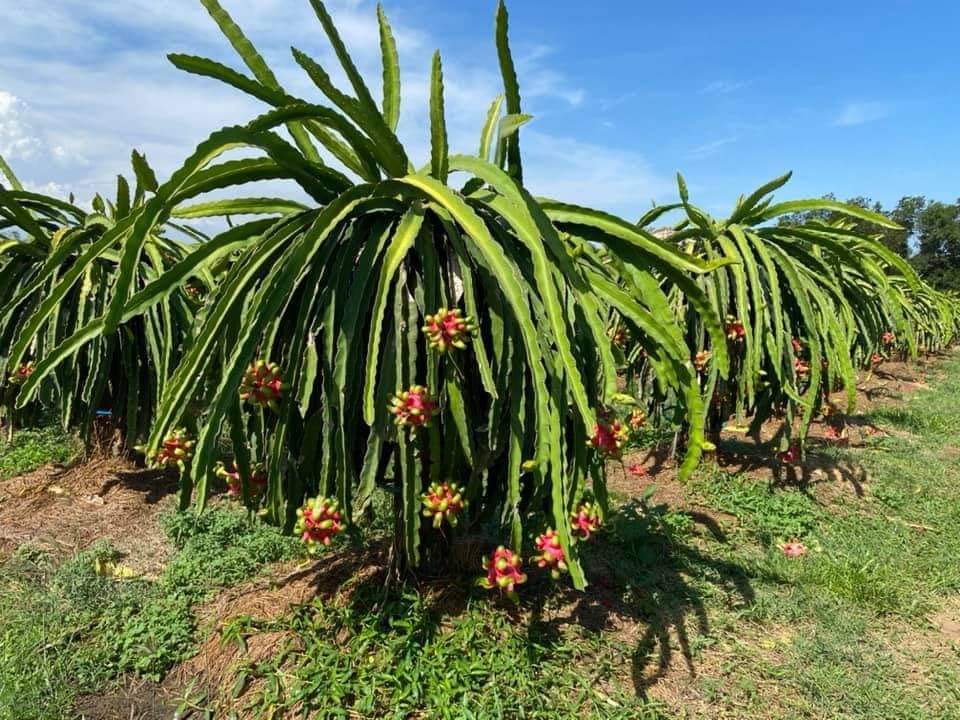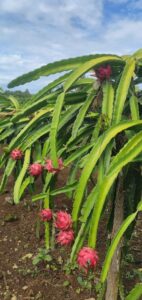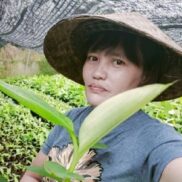Dragon Fruit Plant Information and Environmental Requirements

This post is also available in:
This post is also available in:
![]() Español (Spanish)
Español (Spanish) ![]() Français (French)
Français (French) ![]() Deutsch (German)
Deutsch (German) ![]() हिन्दी (Hindi)
हिन्दी (Hindi) ![]() العربية (Arabic)
العربية (Arabic) ![]() Türkçe (Turkish)
Türkçe (Turkish) ![]() 简体中文 (Chinese (Simplified))
简体中文 (Chinese (Simplified)) ![]() Português (Portuguese (Brazil))
Português (Portuguese (Brazil))
Dragon Fruit plant information and morphology
 The Dragon Fruit is a tropical, perennial, epiphytic, vine-like cacti fruit tree that belongs to the Cactaceae family. This climbing cactus has triangular, green stems (up to 6 m or 20 feet long) and is mainly propagated with cuttings, but seeds can also be used.
The Dragon Fruit is a tropical, perennial, epiphytic, vine-like cacti fruit tree that belongs to the Cactaceae family. This climbing cactus has triangular, green stems (up to 6 m or 20 feet long) and is mainly propagated with cuttings, but seeds can also be used.
The flowers are hermaphrodites (have both female and male reproductive organs), but some varieties require cross-pollination to form fruits.
They bloom only at night and only for one night; hence the plant is sometimes also called “moonflower” or “lady of the night“. They are bell-shaped, white, and large (20-36 cm or -14 inches long and 23 cm or 9 inches wide). The pitahaya plant can have between 4 to 6 fruiting cycles annually, depending on the variety and the environmental conditions.
Dragon Fruit Colors
Dragon Fruit flesh can range from white (white, pink, yellow, or orange skin) to hot pink or deep purple with tiny black seeds. The color of the flesh determines the flavor. For example, whitish dragon fruits can have a mild taste, and darker flesh can be sweeter and juicer.
Types of Dragon Fruit
- Hylocereus megalanthus: yellow fruit and whitish flesh and is also known as Pitaya amarilloar yellow pitahaya.
- Hylocereus costaricensis: Red fruit with red-pink flesh is also known as a Pitaya rojaor red-fleshed pitahaya.
- Hylocereus undatus: Pink color fruit with white color flesh and Pithaya blauncaor white-fleshed pitaya.
Environmental requirements of Pitaya plants
Dragon fruit plants are sustainable for tropical climates and can grow in USDA zones 9 through 11 and in regions with an altitude below 800 m (2625 feet). They are cultivated in dry environments and relatively tolerant to unfavorable conditions. As a cactus, dragon fruit is considered drought tolerant, but fruit production can be maximized when the plants receive more than 800mm annually. The modification of the stem for water storage, the reduction of leaves, the waxy surfaces, and the night-time opening of the tissues for CO2 enable the plants to tolerate harsh conditions. Epiphytic cacti use their adventitious roots to cling to rocks and trees for support. Aerial roots collect water and nutrients from their surroundings.
Even though dragon fruit is in the cactus family, it is not like subtropical cacti from Central America and South America, meaning it thrives in mild, humid environments. The plant can survive and grow when the temperature fluctuates between 32 and 90 °F (0-32 °C), but it can thrive and reach its yield potential at 65°F–77°F (18°C–25°C). More extreme temperatures outside of these limits can damage the plants. Similarly, while the plants require good sun exposure, in areas with high temperatures and sunlight, shading may be needed for outdoor cultivation.
While they are not very demanding in a specific soil type, pitahaya can have maximum growth and yield in well-drained, light soils with slightly acidic (5.5-6.5) pH and rich in organic matter. Finally, the plant stands out due to moderate to high salt tolerance.
References:
- Rolf Blancke, Tropical Fruits and Other Edible plants of the world: An Illustrated Guide (New York: Comstock Publishing Associates, 2016)
- http://www.masterclass.com/articles/how-to-grow-dragon-fruit-from-seed-and cuttings
- www.hgtv.com/outdoords/flowers-and0plants/fruit/grow-dragon-fruit-from-seed
- Dpir.nt.gov.au/_data/assets/pdf-file/0004/232933/778.pdf
- https://edis.ifas.ufl.edu/publication/HS303
- https://www.fftc.org.tw/htmlarea_file/activities/20150817121105/02-15P10.pdf
Dragon Fruit: Crop History, Nutritional Value and Uses
Dragon Fruit Plant Information and Environmental Requirements
Dragon Fruit Variety Selection
Soil Requirement and Land Preparation for Dragon Fruit
Dragon Fruit Planting Distances and Trellising
Dragon Fruit Pollination and Propagation
Dragon Fruit tree Training and Pruning
Dragon Fruit Water Requirement and Irrigation Systems








































































